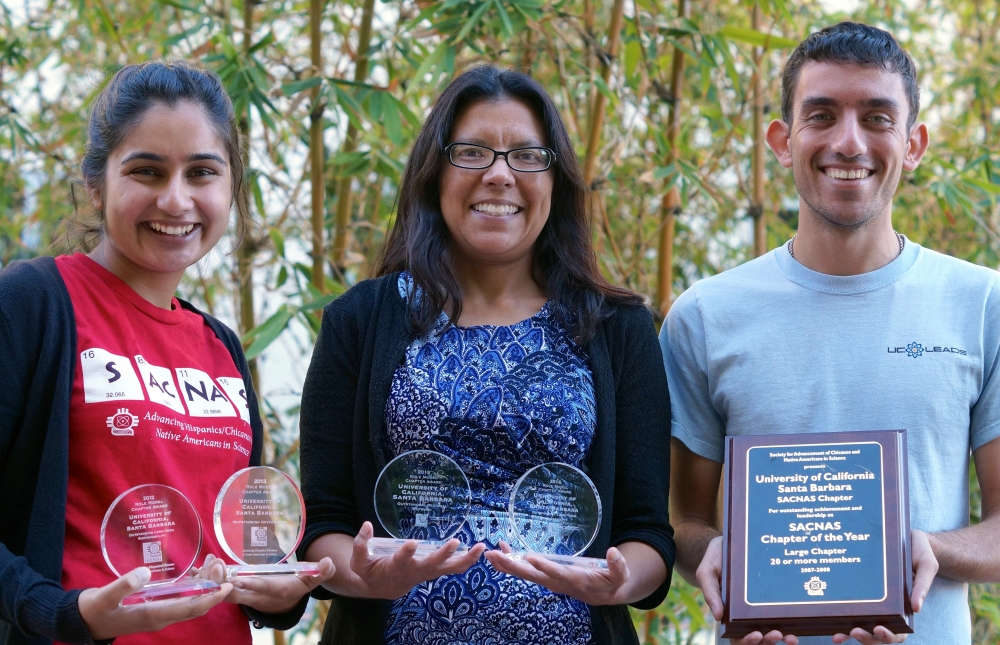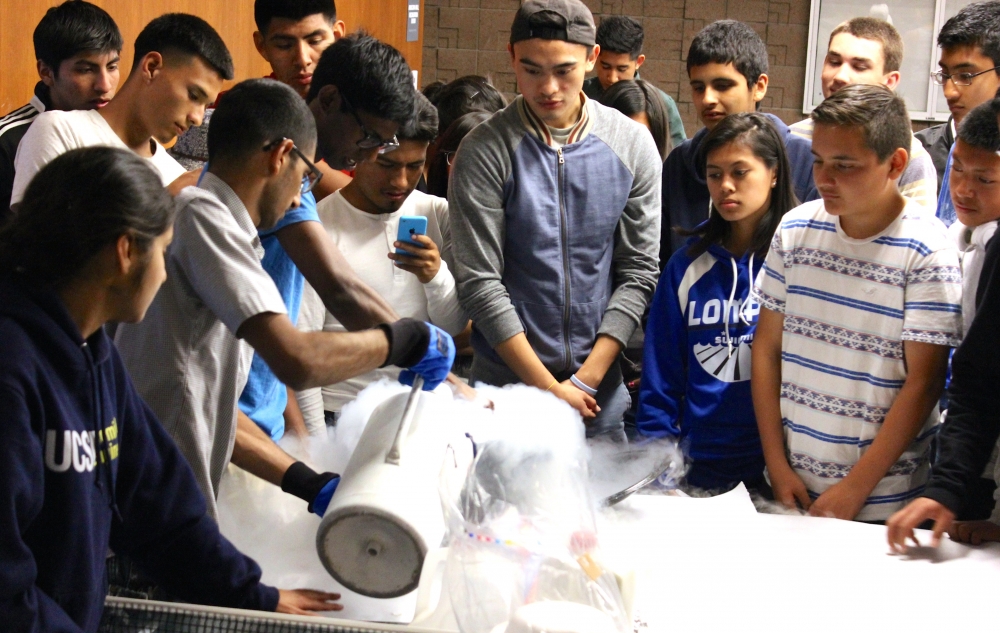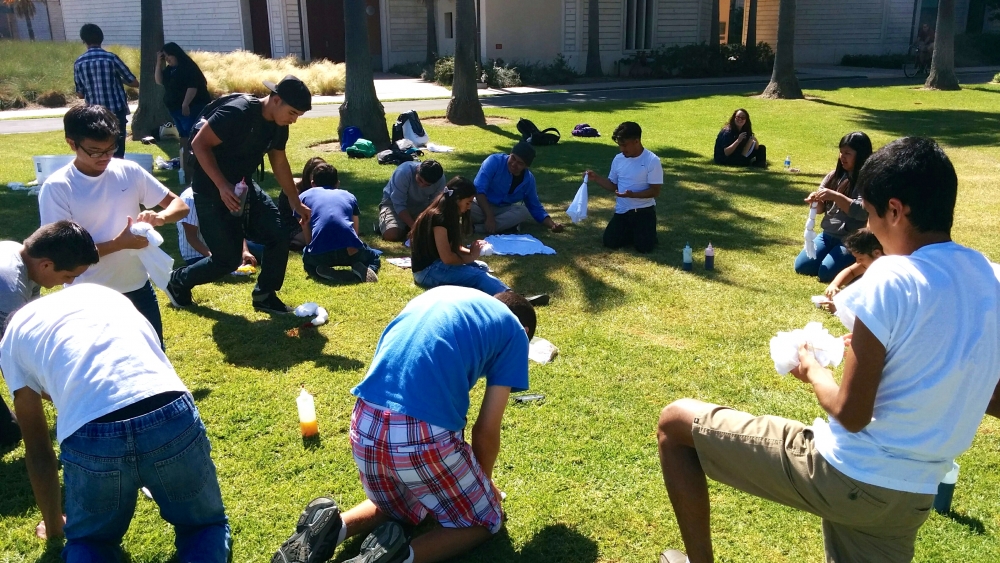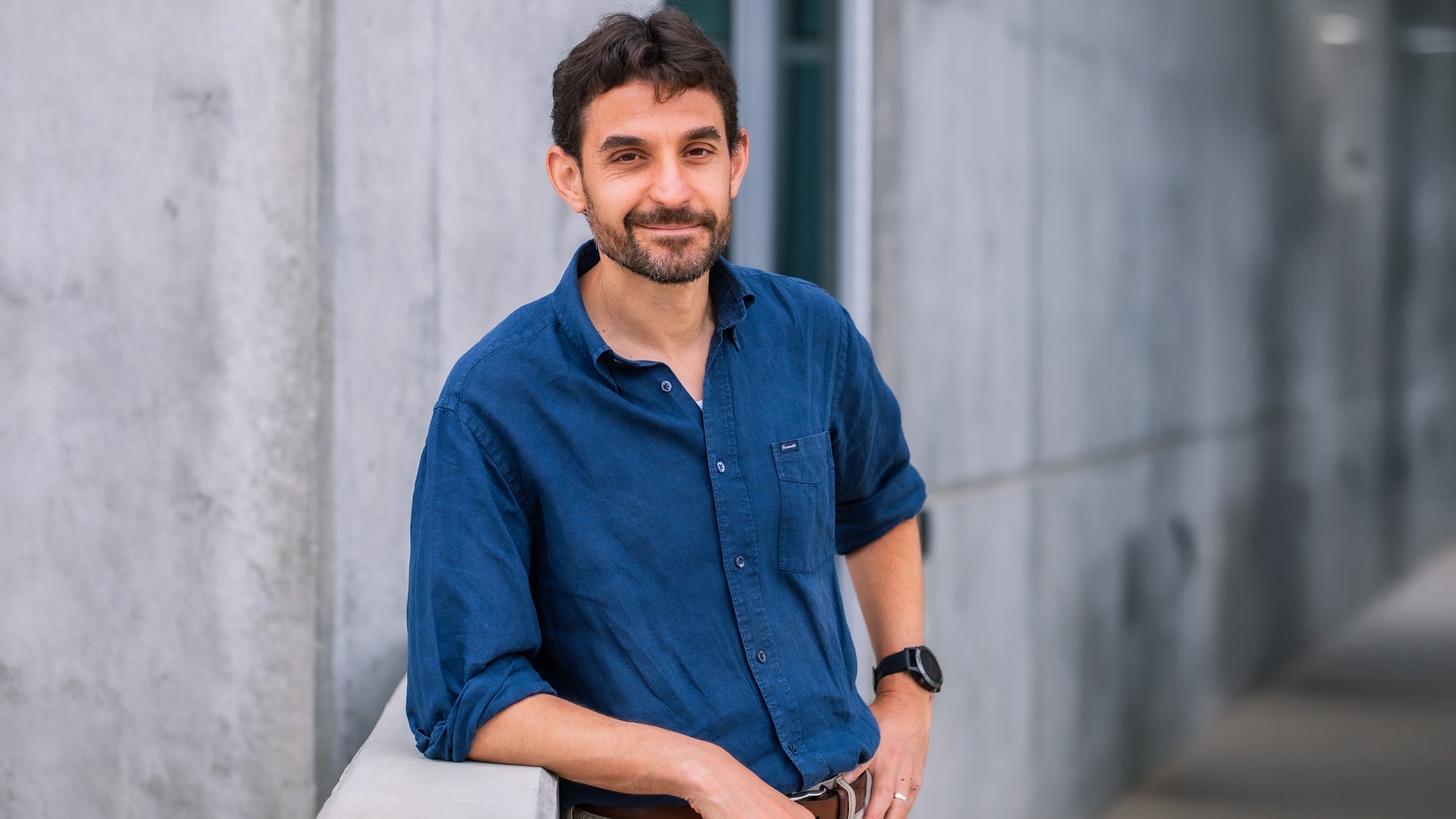A Helping Hand

The UC Santa Barbara chapter of the Society for Advancement of Chicanos/Hispanics and Native Americans in Science (SACNAS) has received the 2015 Outstanding Regional Network Role Model Award. This award marks the fourth in as many years bestowed upon the UC Santa Barbara chapter by the national organization.
Since its inception in 2004, the chapter has been recognized as a role model for outstanding long-term sustainability (2014, 2012); governance (2013); being the most active chapter (2008); and exemplary effort to promote student success (2006).
With the goal of supporting students in STEM (science, technology, engineering and mathematics) areas of study, the organization sponsors a variety of activities, including professional development events, guest speakers, community service and high school outreach programs. It was established by M. Ofelia Aguirre, director of the Center for Science and Engineering Partnerships (CSEP), and mathematics professors Kenneth Millett and Hector Ceniceros.
“Our SACNAS chapter members have created a community where the students support each other,” Aguirre said. “It’s not a competitive atmosphere at all. The goal is for everyone to be successful, and they accomplish this by learning from each other and helping each other move forward.”
The SACNAS Outreach Program, which every spring hosts high school students at UC Santa Barbara, is the chapter’s largest annual undertaking. In past years, between 40 and 50 students from as far away as San Diego and Bakersfield have attended. Many of the participating schools have low matriculation rates, and the teens that apply to the program are often from underrepresented groups in STEM.
“We’re really excited to have these students visit UCSB,” said current co-president and last year’s outreach coordinator Christopher Siefe, who participated in the program as a high school student. “They’re here for two days and stay overnight in the dorms, which is something that makes our outreach program really unique.”
The high school students spend the day on campus with STEM undergraduate mentors, attending lectures, touring faculty research labs and meeting key staff members to learn about admissions, financial aid and the myriad resources available to enrolled students.
But high school outreach isn’t the chapter’s sole purpose. SACNAS members also organize other community service activities on campus and in the Santa Barbara area.
“We’re doing a lot of things with our Associated Students Coastal Fund, where we work on restorations in the local communities,” explained co-president Dilpreet Kaur, a senior majoring in chemical engineering. “We also partner with FUSE (Family Ultimate Science Exploration), a program that allows eighth graders and their families to investigate science together.”
Part of the strength of UC Santa Barbara’s SACNAS chapter is rooted in its efforts to join forces with other student organizations. For example, members assist with Science and Technology MESA Day hosted by Los Ingenieros, a fellow student association that also helps inspire its members to pursue the highest level of education.
According to Aguirre, the UC Santa Barbara SACNAS chapter is driven by students’ motivations. She noted that this year’s officer roster includes students in a variety of majors, all of whom are committed to creating a supportive network and to reaching out to the community at large to encourage the next generation of scientists and engineers.
“The SACNAS officers have created a nurturing academic and social networking environment that promotes active engagement of all members in professional preparation activities,” Aguirre said. “They allocate resources and time to encourage and train the next generation of student leaders, which has been a key component to their sustainability and success over the past 11 years.”
For more than 40 years, SACNAS has provided strong national leadership aimed at improving and expanding opportunities for minorities in the scientific workforce. More than 100 chapters nationwide are dedicated to encouraging Chicano, Hispanic and Native American students — along with students of other ethnic backgrounds — to pursue higher education and to assist them in obtaining the advanced degrees necessary for scientific research, industry, leadership and teaching careers at all levels.





